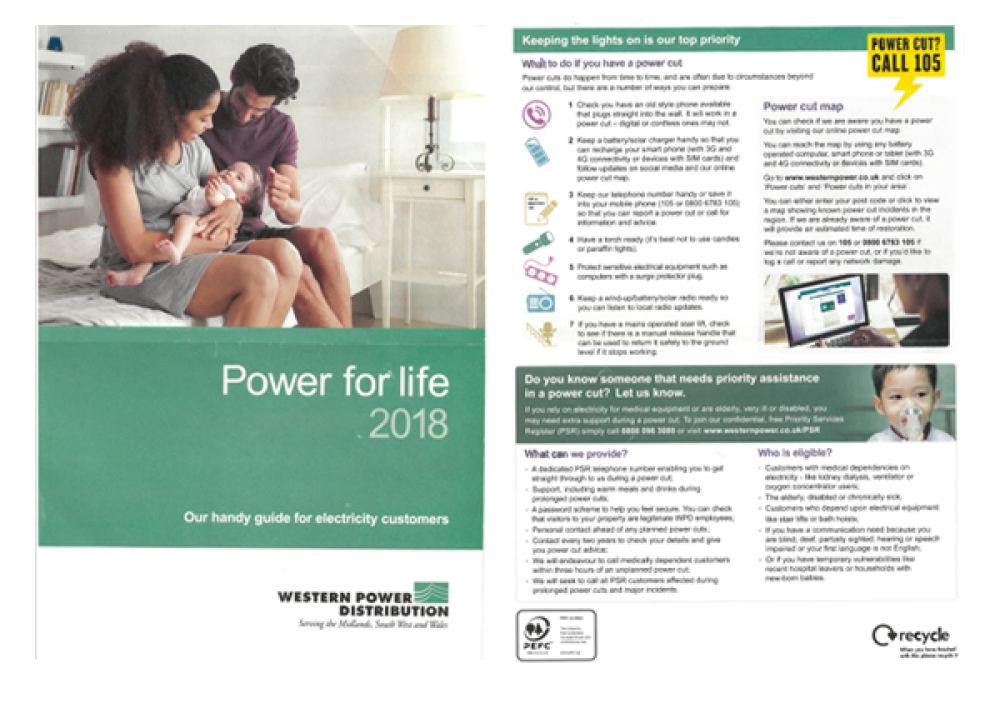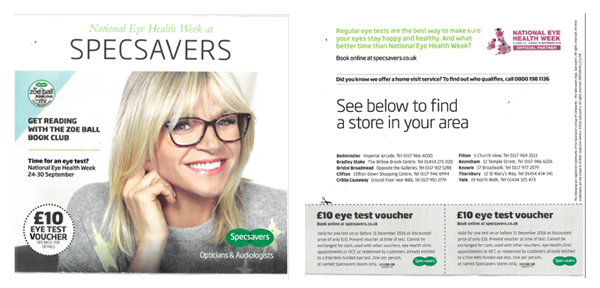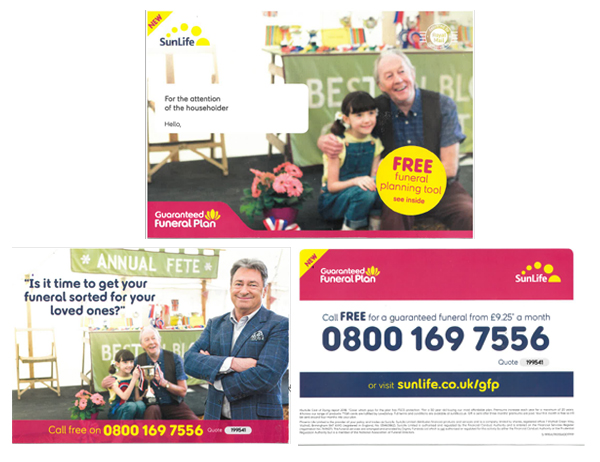Creative effectiveness in door drop - examples from 2018
29 Oct 2018

Written by Ben Briggs, Deputy Chair of the Print Council and Media Strategy Director of Edit Agency Ltd.
The hidden potential for creativity in door drop mail
As a dad to two young girls, I’ve found myself in numerous conversations with other parents, holding a plate of party food and making awkward small talk about my job.
Having worked in the industry for nearly 15 years, I still don’t have a succinct answer for “tell me, what do you do?”. The marketing world evolves at a rapid pace and no day is ever the same – there is constantly a new process, technique, or buzzword to get your head around.
So, I usually find my default response is: “you know that stuff that is delivered through your post-box or appears in your amazon parcel? I do that.” To which people usually say: “you mean you’re responsible for junk mail?”
At that point I make my excuses and head off to find my wife.
But ‘junk mail’ isn’t always junk
Seemingly, there is still a huge stigma around door drop mail. But thanks to the great work being done through JIC Mail and pushed by MarketReach to re-educate marketers and consumers alike, one day I may be able to hold a conversation about my job without someone having a negative reaction to the ‘dark art’ that is print media.
Print, and door drops specifically, benefit from tangibility, creativity, targeting, and the benefit of being delivered directly into consumers’ homes, driving high levels of engagement (as proven in the JIC Mail studies).
What I personally like about door drops is the huge potential of creative flexibility that they present. To showcase this, I wanted to talk about some of my favourites that have appeared in my house in the last few weeks:
Western Power
Arguably it’s not the best quality door drop I’ve ever received, as it’s a relatively thin A4 4pp on light 80gsm stock – but when you’re covering an area the size of the Midlands, Wales, and the South West, you’ve got to balance cost with scale.
The bit that caught my eye was the hero image. It resonated with me because of my own household composition, so the targeting box gets a tick on this one based on the profile of the cul-de-sac I live in.
The rest of the mail piece is generic and fairly text heavy, but the back page really caught my attention, where Western Power outlines its process for ‘emergency response’. It gives some handy tips on how to prepare for this, as well as letting you know how you can help the elderly and vulnerable.
As it happens, we did have a power cut (I doubt whether Western Power created the surge to trigger such an impact, but it would have been very impressive and timely). The guide immediately resonated with me, and I even searched through the mail in our holding area to find it as we have a 90-year-old neighbour who it was extremely relevant for.
Had it not been for the significant dwell time that door drop has in the home (well more than 4 weeks) it probably wouldn’t have hit the mark as much as it did from just the initial picture.
Bath and North-East Somerset Council
Clear, simple, easy to understand and act from. Government and council information benefits from the highest levels of reach and frequency due to its nature… I must remember to complete my household reminder.
Specsavers

I like this because it shows how you can tie in brand, sponsorship, and direct response in a single campaign. Specsavers has done this by keeping consistency, tone of voice, and imagery from above and below the line, which, on this occasion, is centred on National Eye Health Week.
Zoe Ball has returned to our screens rather than our radios, and her new TV show is sponsored by Specsavers (and features a link to her Book Club). It gives Specsavers a platform to wheel out an inordinate amount of reading-based content around eye health.
This includes tips on why it’s important to look after your eyes, along with different types of vision solutions. It also gives them a chance to show off the legendary Eamonn Holmes, who talks about hearing loss.
The section I like is on the reverse and shows the creative flexibility that door drop has. It cleverly uses my postcode as a proxy, providing me all the stores within a 15-minute drive of my house, including the address and phone number, as well as serving me up some tasty discount eye test vouchers.
Sunlife

As with the Western Power example, this one benefits from door drop dwell time. It hit home for me on a personal level – I sadly lost my grandad six weeks ago, so it was timely and relevant. Unless tech advancements have evolved at a rapid pace, Sunlife wouldn’t have known that (certainly not from an unaddressed perspective, anyway).
The language is clear and simple, and the tone is beautifully written to be both informative yet sympathetic. As spend in the sector indicates, it’s a bit of a numbers game, as no-one can build a predictive model for this, but there are two areas that I really like:
- For the first time in a long time, there isn’t a monetary incentive trying to tempt you from the get-go. Instead, it leads with a ‘free funeral planning tool’, something much more contextually relevant. They have still included a gift card, but it’s not taking centre stage.
- It uses great creativity to showcase the offer. It’s bright, vibrant, and balances copy and imagery well throughout. The standout bit is the unusual format – it presents itself as a slightly undersized A5 22 gram, but unwraps into an 8 page roll-fold, bursting with relevant information about the main offer, but also provides an informative guide on how to broach the difficult subject with family.
It also only gives one way to respond (by phone). The glaring omission is a coupon or postal response (this form has been synonymous with the target audience for charities and financial services alike). I found it quite refreshing not to see this in the pack, and the fact that Sunlife is trying to push people to engage in conversation with their call centre is positive.
Now, as most marketers will undoubtedly know, we live in an incredibly non-linear world, so you need to look longer than the end of your nose when measuring response.
With so many more media touchpoints we can use to engage consumers, we must recognise there are plenty of different ways they can respond, which means there are several formats to consider when planning an acquisition campaign. Attribution or marketing-mix modelling is the only veritable way to understand this, and it’s becoming a staple in most modern media planning.
Maybe next year I’ll have found a better way of explaining my job. But in the meantime, it’s never been a better time to work in marketing and print media – the rapid evolution in technology allows data and creative to fuse together to create amazing customer experiences.
Please login to comment.
Comments